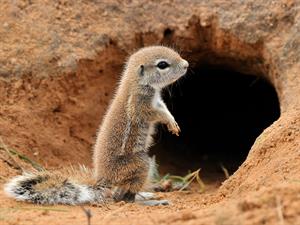
PUMPA - SMART LEARNING
எங்கள் ஆசிரியர்களுடன் 1-ஆன்-1 ஆலோசனை நேரத்தைப் பெறுங்கள். டாப்பர் ஆவதற்கு நாங்கள் பயிற்சி அளிப்போம்
Book Free Demo The smaller desert animals do not drink water. They burrow underground during the hot day and come out at night to eat. Some of them eat other animals and get the water they need from the moisture in the meat. Others eat plants and seeds and get the water they need from plant juices.
Desert plants also adapt themselves to the life they lead. Cactus plants store water in their thick stems. Their roots lie close to the surface of the ground and quickly absorb the moisture from the light rains that occasionally fall. The major feature of all deserts is, of course, dryness and variations of temperature. In humid climates, the moisture in the air acts like a blanket and protects the earth’s surface from the hot rays of the sun. The absence of this blanket in desert lands causes the desert to heat up rapidly during the day and to cool off rapidly at night.
As mentioned earlier, some animals do not drink water during their lifespan, like the Kangaroo rat, which lives in the south-western deserts of the U.S. They do not come out during the day time to escape from the hot surface temperature. These animals, though, get their water content from the foods they eat. These animals live in burrows and do not come out during the daytime to safeguard from the hot temperature and to save water from its body.

Squirrel’s burrow
They kill and eat other desert animals for their survival, and the water content is supplied through the meat of the hunted ones.
While some animals hunt and eat others animals, others in the deserts depend on plants for their survival. So, they eat plants and get water content from the juice of the plants.
On the other hand, desert plants also grow well in deserts, making themselves suitable to grow under the harsh conditions of the deserts. Among them, Cacti are the more common variety. Apart from plants, some desert trees also grow well under the harsh conditions of deserts.
As mentioned earlier, Cacti plants can be the best example in terms of adapting themselves to the climatic region of the deserts. Their thick, fleshy structure help in storing water inside its body.
The surprising fact about Cactus plants is that they could develop temporary roots in two hours to absorb water when it rains, and the roots get dried up once the rain stops. The roots of Cactus plants are shallow and widespread ones that spread out in several meters, which helps in collecting water from the wet soil.
Some of the desert plants are listed below:
- Pancake Prickly Pear Cactus
- Barrel Cactus
- Saguaro Cactus
- Lace or Hedgehog Cactus
- Organ Pipe Cactus
- Brittlebush
- Creosote Bush
- Desert Ironwood Plant
Meaning of difficult words:
| S.No | Words | Meaning |
1. | Moisture | Small drops of water or other liquid in air |
2. | Feature | Something important or noticeable |
3. | Blanket | A thick layer or cover of something |
4. | Rapidly | Very quickly |
5. | Shallow | Not deep |
6. | Safeguard | To protect something from harm or danger |
7. | Widespread | Existing over a large area |
Reference:
National Council of Educational Research and Training (2006). Supplementary. The Desert (pp.15-18). Published at the Publication Division by the Secretary, National Council of Educational Research and Training, Sri Aurobindo Marg, New Delhi.